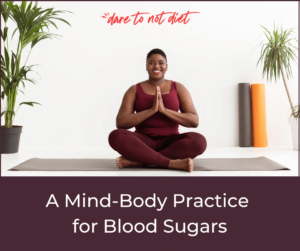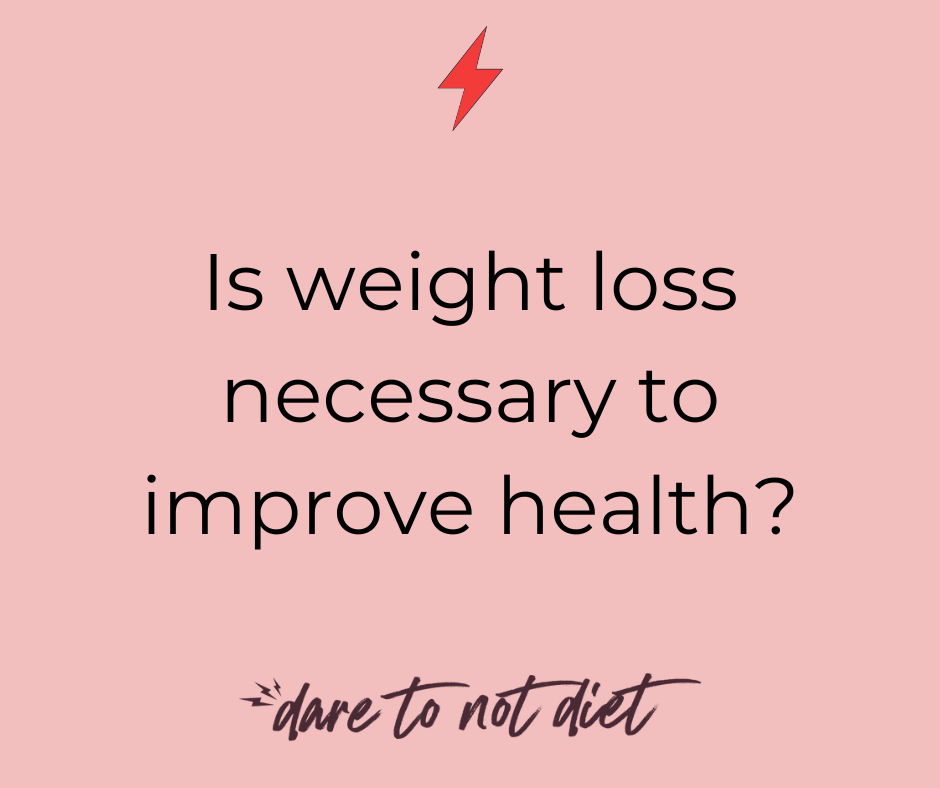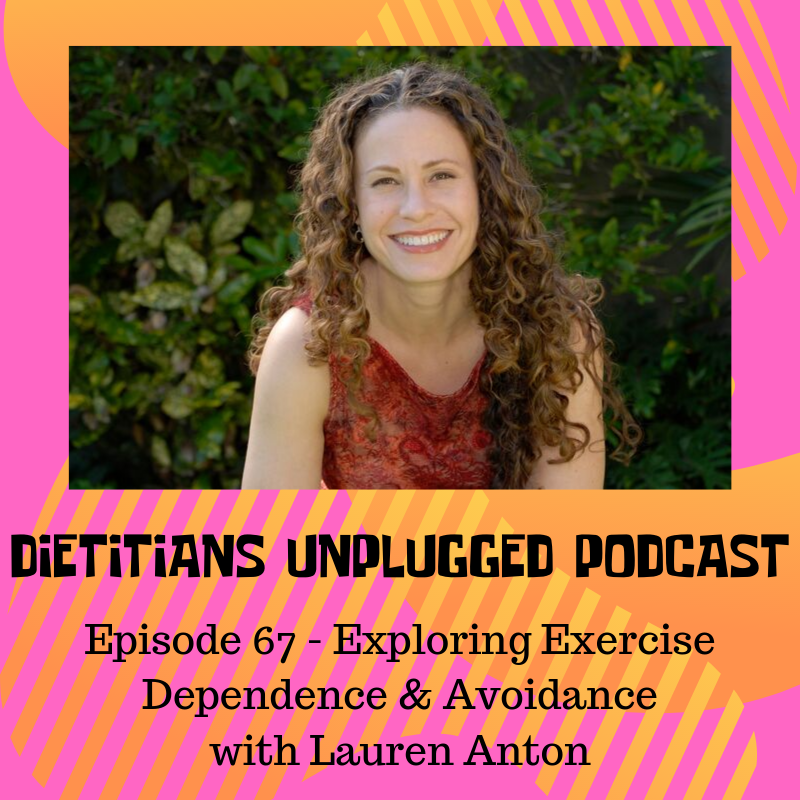Movement

New research shows that adding in this one simple practice – yoga – can help lower blood glucose by a significant amount.
In fact, several mind-body practices, such as yoga, meditation, qigong, and mindfulness-based stress reduction all showed significant blood sugar reductions. (The majority of the studies included in this meta-analysis focused on yoga)
The results showed that “mind-body practices led to an average reduction of 0.84% in participants’ hemoglobin A1c (HbA1c)…Yoga had the biggest impact on blood glucose levels, leading to an HbA1c reduction of 1%. The other mind-body practices studied also had a positive impact on blood glucose.” This was comparable to the effect of Metformin alone on HbA1c.
Including mind-body practices as a part of your self-care is about adding in, not restricting. It is a non-diet practice that is rooted in providing, not avoiding.
It also changes the conversation around movement — it is simply not true that “go hard or go home” is the only way to help blood sugars.
If trying yoga (or tai chi or meditation) is an idea you’ve been toying with but have been unsure if it will be useful in your self-care toolbox, now might be the time to experiment! As always, go at your own pace and give yourself time and patience to make changes that feel good.
Need help for diabetes?
Do you have a diagnosis of diabetes or pre-diabetes and have been told you need to lose weight? I have something that could help. Get my free guide, 7 Surprising Myths About Diabetes and Weight.
Ready to get some help with diabetes? Check out my group support and online program, Self-Care for Diabetes.
Start your path to normal eating with my free guide, 5 Strategies to Stop Overeating
Movement

One of the very seductive tactics of the weight loss industry is to convince us that we need to diet to not only “look better!” but also that it is necessary to lose weight to improve your health.
This is not entirely accurate. (especially when we know that diets don’t work very long for most people)
So what works?
In fact, there are many many things you can do to improve your health without having to go on yet another diet. This might look like:
⚡Eating meals regularly throughout the day
⚡Not skipping meals
⚡Aiming for some balance in your plate (protein, fat, carbs)
⚡Exploring ways to include more fruits and vegetables in your diet
⚡Finding exercise that works for YOU and is not focused solely on “burning calories”
⚡Listening for and honoring your hunger and fullness cues
⚡Giving yourself permission to eat as much as you want of all the foods you love
Doesn’t pursuit of health sound SO achievable? That’s because it is!
Except when…diet culture has wreaked havoc on your relationship to food and your body. When you are so convinced you must lose weight to be healthier. When you remember all those negative messages you’ve received about larger bodies.
Yes, then pursuing health becomes more difficult. Then you cannot start with nutrition…instead you must start with healing the eating relationship.
The good part is, developing a healthy, all-foods-fit relationship to food IS healthy. Why? Because this gives your body and brain a chance to hear its natural inclination toward health.
I love seeing the light go off for clients when they suddenly realize they can trust their bodies to make wise choices for them. All it took (and sometimes this takes A LOT of work) was to turn down the critical noise and turn up the trust. And they do get healthier, too!
So no, the drudgery of a weight loss diet isn’t necessary to improve your health! There is a better, more achievable, sustainable and most importantly, enjoyable way.
Are you in need of help with your relationship to food?
Are you struggling to get to this place of gentle nutrition or peace with eating? You’re not alone. My Peaceful Eating Jumpstart Group Coaching Program will be opening for enrollment soon and is designed to bring you relief from emotional eating, binge or overeating or just plain chaotic eating quickly. Stay tuned for more details coming soon (my email list will be notified first – get on my list by downloading my free guide).
Get my free guide, 5 Strategies to Stop Overeating
Movement

Diet culture and eating disorders can make one’s relationship to exercise complicated.
Allow me to flashback for a moment…
It’s the 1980s, and Jane Fonda has just ruined, oops, I mean revolutionized women’s lives with aerobic exercise. Who could resist those neon-and-pastel body suits, leggings and headbands? Without reading too much into the actual history of it all, this, in my mind, is the moment where exercise became some sort of imperative for being “the right kind of female.”
And me? I hated formal exercise. I was a rough-and-tumble kid who liked to play outside at made-up games, pick-up softball and kick-ball games, and still remember the glorious summer when the oldest kid in our neighborhood would organize block-wide games of hide-and-seek, kick-the-can and ghost-in-the-graveyard (Damn my childhood seems idyllic now). I was good at nothing except being scrappy and determined. Always the slowest, but it didn’t seem to matter when we were at play.
Anyhoo, along came high school and uninspired gym teachers who, on occasion, would play videos of “The 20 Minute Workout“, which, upon remembrance, actually came with a health hazard warning, and truly felt like a cardiac nightmare even for a teenager (or maybe just this teenager??). I mean, what was with all the damn jumping??
And then, later, the years of exercising because I felt I should because that’s what thin people did. Needless to say, that ended up feeling like more of a punishment than anything else and did not endear me to exercise for a lifetime.
Flash forward to the present. It’s been a long, circuitous journey to where I am now. I’ve found what works for me for now. And what works for me might not work for someone else, and that’s okay. No one is obligated to exercise either – it’s not a marker of your worthiness as a human in any way.
So what’s your relationship to movement feel like? Do you feel compelled to exercise even when you don’t want to? Do you struggle to incorporate movement into your life even though you truly want to? If so, you might enjoy this Dietitians Unplugged podcast episode that we did with my good friend, colleague and mentor, Lauren Anton MS, RD, CEDRD-S, CPT. She’s knowledgeable in all things exercise and eating disorders and non-diet sports nutrition. She’s amazing and I think you will find her story interesting and her advice helpful.

Show Notes:
Follow Lauren on Instagram
Listen on:
Subscribe and get my free guide:
Why you overeat …and what to do about it
Click here if you just want my newsletter!
Movement

I like to move my body, but sometimes I get sick of the same ol’ same ol’ when it comes to the exercise I’m doing. So lately I’ve been experimenting with trying some new ways to move.
I decided to try the dance studio down the street. I signed up for a Zumba class. Long story short, it was a less than ideal experience. Despite being promoted as good for beginners, the steps were far too advanced, the instructor wasn’t cueing the steps or pointing out the direction ahead of time, and I ended up frustrated and lost. Then I looked around the class and noticed that there were only two people who could be even remotely considered fat – me and another woman. I started wondering how exercise spaces could be made more welcoming to more people – people of different sizes, abilities, and skill. And people who don’t want to think about their bodies as something to shrink or re-shape. People who want to exercise just because it’s fun to move your body.
When I told my podcast partner, Aaron Flores, about it, he had the brilliant idea of asking Ragen Chastain, speaker, writer, dancer, marathoner, fat activist and author of one of my favorite blogs Dances with Fat, about how exercise could be so much more inclusive of more people. She agreed, and we had a great conversation all about what needs to change in the world of exercise to be more inclusive and available to all people. Enjoy!
Listen now:
Subscribe and get my free guide:
Why you overeat …and what to do about it
Click here if you just want my newsletter!
Movement
 Do you hate “exercise?” So do we! Sort of…Episode 7 is here, and in it, Aaron and I talk about how, after making peace with food, we’ve also made peace with our relationship to moving our bodies. We also talk about fitness trackers, our different approaches to getting activity in our lives, and why we actually hate the word “exercise!”
Do you hate “exercise?” So do we! Sort of…Episode 7 is here, and in it, Aaron and I talk about how, after making peace with food, we’ve also made peace with our relationship to moving our bodies. We also talk about fitness trackers, our different approaches to getting activity in our lives, and why we actually hate the word “exercise!”
Here is The Atlantic magazine infographic we referred to during the podcast.
You can also listen on iTunes and Libsyn! Like our Facebook page to get all the latest news on our podcast and other non-diet podcasts! And if you like our podcast, please give us a rating and review on iTunes – this will help more people find us!
Subscribe and get my free guide:
Why you overeat …and what to do about it
Click here if you just want my newsletter!
Movement
![Doenertier82 at the German language Wikipedia [GFDL (http://www.gnu.org/copyleft/fdl.html) or CC-BY-SA-3.0 (http://creativecommons.org/licenses/by-sa/3.0/)], via Wikimedia Commons](https://daretonotdiet.com/wp-content/uploads/2015/02/Phodopus_sungorus_-_Hamsterkraftwerk.jpg)
Maybe tomorrow he’ll take a dance class.
When the revelation hit me that what I was doing with both my eating and my exercising was not first and foremost fun or pleasurable, I had to take pause. Because I am a fun person. Ask anyone, you want me at your party! And our time on this great blue marble is limited, so why, then, was I taking what little free time I had and spending it on not-fun activities?
Right about the time I decided to stop dieting restrictively, I also decided to quit Exercise (with a capital E) cold turkey. Reevaluating the choices I was making in my life, I realized that the pleasure I had once got from weight loss was long usurped by the misery of trying to maintain it. Quitting Exercise seemed extreme but it would help me to take a step back and decide what I really wanted to do for movement, or frankly, if I even wanted to do anything at all.
Taking a break from all that gym drudgery was heaven at first, but also a little alarming. I’d been a regular gym-goer for at least 10 years. What was I supposed to do now?? Of course I still walked around the city; I have always loved walking and didn’t want to give that up. But did I want to do something beyond walking?
Turns out, yes. After many months of being gym-free, I realized that I actually did enjoy going to a gym – when I wanted to. There was the key: going because I felt I had to was pure awfulness, but going just because I felt like getting sweaty felt like a luxury. No schedule. No strict regimen of so many minutes of cardio followed by so many reps and sets of weights. I got to do whatever I felt like: maybe a Zumba class, maybe yoga, or maybe still be that hamster on its wheel on the elliptical machine. That’s when going to the gym became a treat and not a chore. Since then, I’ve maintained a gym membership wherever I’ve lived but without the need to commit to X many nights a week. Ironically, that freedom has allowed me to attend even more than I thought I would. Movement makes me feel great and I think that is the best reason to do it.
Last year I challenged myself to find new and fun things to do outside of my regular activity. That led me first to a hula hooping class, where I learned a bunch of cool tricks that I continue to be able to do badly. Then, having been a pretty lousy swimmer most of my life, I decided to take swimming lessons. After that I spent the summer at the beach in the ocean. I rode a bike by the seaside for the first time in 15 years. Occasionally I hike in the beautiful hills surrounding LA. Frequently, I dance vigorously in my living room which feels best of all.
I also learned what I don’t want to do: Running of any sort. Belly dancing. Lifting super-heavy weights. Spinning or any kind of stationary bike. As I experiment, I’m sure this list will continue to grow too.
I’ll continue this trend of trying new (and old) things in 2015 with two rules: it has to make me feel good and I have to enjoy it.
It doesn’t have to be a gym or structured classes or anything that costs money. It doesn’t even need to be an activity anyone has ever heard of before. What matters — the thing that will make it wonderful and worth doing — is that you do it because it makes you feel amazing in that moment.
We could call it Intuitive Exercising. It reminds me how we move as children. No kid ever played hide and seek and then wondered after how many calories she burned. Let’s take a lesson from the kids we were and stop Exercising with a capital E and start moving for fun.
Subscribe and get my free guide:
Why you overeat …and what to do about it
Click here if you just want my newsletter!